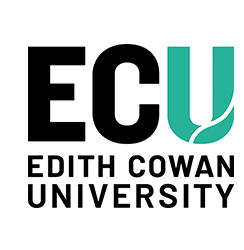Author Identifier (ORCID)
Stefan Iglauer: https://orcid.org/0000-0002-8080-1590
Abstract
Although CO2 geological storage (CGS) is thought to be one of the most promising technologies to sequester the anthropogenic CO2 to mitigate the climate change, implementation of the method is still challenging due to lack of fundamental understanding of controls of wettability, which is responsible for residual trapping of the gas and its flow dynamics. One of the key parameters that controls the wetting state is the zeta potential, ζ, at rock-water and CO2-water interfaces. ζ in systems comprising rocks, carbonated aqueous solutions and immiscible supercritical CO2 have not been measured prior to this study, where we detail the experimental protocol that enables measuring ζ in such systems, and report novel experimental data on the multi-phase ζ. We also demonstrate for the first time that ζ of supercritical CO2-water interface is negative with a magnitude greater that 14 mV. Moreover, our experimental results suggest that presence of multi-valent cations in tested solutions causes a shift of wettability toward intermediate-wet state. We introduce a new parameter that combines multi-phase ζ and relative permeability endpoints to characterize the wetting state and residual supercritical CO2 saturation. Based on these results, we demonstrate that ζ measurements could serve as a powerful experimental method for predicting CGS efficiency and/or for designing injection of aqueous solutions with bespoke composition prior to implementing CGS to improve the residual CO2 trapping in sandstone formations.
Document Type
Journal Article
Date of Publication
11-1-2024
Volume
60
Issue
11
Publication Title
Water Resources Research
Publisher
AGU
School
School of Engineering
Funders
Aberdeen‐Curtin PhD studentship / Spanish Ministry of Science, Innovation and Universities (BEAGAL18/00259)
Creative Commons License

This work is licensed under a Creative Commons Attribution 4.0 License.


Comments
Vinogradov, J., Hidayat, M., Sarmadivaleh, M., Vega‐Maza, D., Iglauer, S., Zhang, L., Mei, D., & Derksen, J. (2024). Zeta potential of supercritical CO2‐water‐sandstone systems and its correlation with wettability and residual subsurface trapping of CO2. Water Resources Research, 60(11). https://doi.org/10.1029/2023WR036698